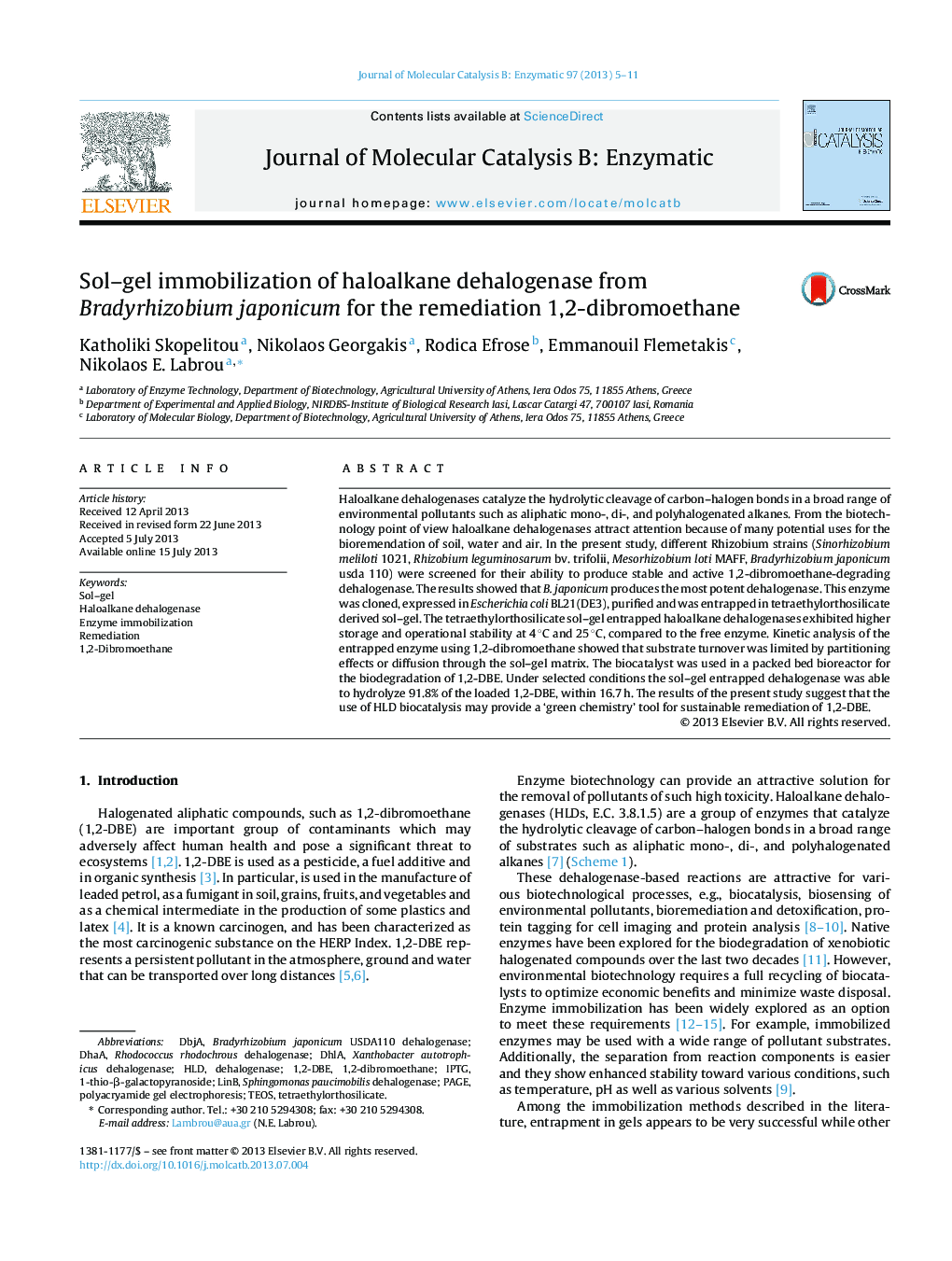| کد مقاله | کد نشریه | سال انتشار | مقاله انگلیسی | نسخه تمام متن |
|---|---|---|---|---|
| 69581 | 48782 | 2013 | 7 صفحه PDF | دانلود رایگان |

• Haloalkane dehalogenase (DbjA) was efficiently entrapped in tetraethylorthosilicate (TEOS) derived sol–gel.
• The entrapped DbjA exhibited higher storage and operational stability compared to the free enzyme.
• The entrapped DbjA was used in a packed bed bioreactor for the biodegradation of 1,2-DBE with 91.8% yield within 16.7 h.
Haloalkane dehalogenases catalyze the hydrolytic cleavage of carbon–halogen bonds in a broad range of environmental pollutants such as aliphatic mono-, di-, and polyhalogenated alkanes. From the biotechnology point of view haloalkane dehalogenases attract attention because of many potential uses for the bioremendation of soil, water and air. In the present study, different Rhizobium strains (Sinorhizobium meliloti 1021, Rhizobium leguminosarum bv. trifolii, Mesorhizobium loti MAFF, Bradyrhizobium japonicum usda 110) were screened for their ability to produce stable and active 1,2-dibromoethane-degrading dehalogenase. The results showed that B. japonicum produces the most potent dehalogenase. This enzyme was cloned, expressed in Escherichia coli BL21(DE3), purified and was entrapped in tetraethylorthosilicate derived sol–gel. The tetraethylorthosilicate sol–gel entrapped haloalkane dehalogenases exhibited higher storage and operational stability at 4 °C and 25 °C, compared to the free enzyme. Kinetic analysis of the entrapped enzyme using 1,2-dibromoethane showed that substrate turnover was limited by partitioning effects or diffusion through the sol–gel matrix. The biocatalyst was used in a packed bed bioreactor for the biodegradation of 1,2-DBE. Under selected conditions the sol–gel entrapped dehalogenase was able to hydrolyze 91.8% of the loaded 1,2-DBE, within 16.7 h. The results of the present study suggest that the use of HLD biocatalysis may provide a ‘green chemistry’ tool for sustainable remediation of 1,2-DBE.
Haloalkane dehalogenase from Bradyrhizobium japonicum (DbjA, E.C. 3.8.1.5) was entrapped in tetraethylorthosilicate (TEOS) derived sol–gel. The TEOS sol–gel entrapped DbjA exhibited higher storage and operational stability at 4 °C and 25 °C, compared to the free enzyme. The biocatalyst was used in a packed bed bioreactor for the biodegradation of 1,2-DBE. Under selected conditions the sol–gel entrapped DbjA was able to hydrolyze 91.8% of the loaded 1,2-DBE. The results of the present study suggest that the use of HLD biocatalysis may provide a ‘green chemistry’ tool for sustainable remediation of 1,2-DBE.Figure optionsDownload as PowerPoint slide
Journal: Journal of Molecular Catalysis B: Enzymatic - Volume 97, 15 December 2013, Pages 5–11